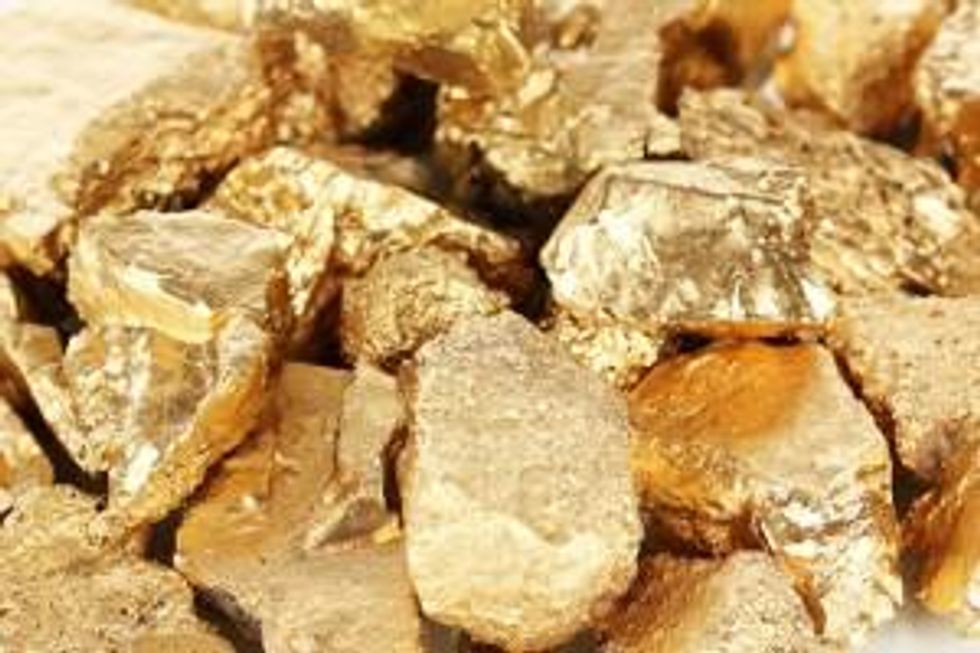The Conversation (0)
World Gold Council: Consumer Demand Hit Record High in 2013
Oct. 03, 2015 10:45AM PST
Precious MetalsDemand for gold jewelry, bars and coins hit a record high last year, according to the World Gold Council’s latest Gold Demand Trends report. The report also confirms that last year Chinese gold demand surpassed that of India for the first time.
This article was first published on Gold Investing News on February 19 2014.
2013 was a polarizing year for the gold market, the World Gold Council (WGC) states in its Gold Demand Trends report, released yesterday.
On the one hand, consumer demand for the metal — which includes jewelry, small bars and coins — rose 21 percent, to a record high of 3,863.5 tonnes. That increase was largely caused by gold’s drastic price drop in April, though buying continued throughout the year.
However, the report notes that at the same time, improved “macro sentiment in the US” spurred western investors to sell off “more tactical ETF positions,” bringing the year’s total ETF outflows to 880.8 tonnes. The overall effect was that net full-year gold demand fell 15 percent from the 2012 total, to 3,756 tonnes.
What were the report’s other key findings? Here, Gold Investing News takes a look.
Where did the gold go?
The WGC notes in its report that gold supply in 2013 came to a total of 4,339.9 tonnes, down 2 percent from 2012, due to a drop in recycling activity. But what the organization is more concerned about is where all that gold went.
As mentioned, gold jewelry, bars and coins were a big source of gold demand last year. In fact, “continuous growth” in the jewelry sector brought about “the largest volume increase” in jewelry demand since 1997; specifically, it rose to 2,209 tonnes, a 17-percent increase from 2012.
Meanwhile, demand for gold bars and coins hit an all-time high of 1,654 tonnes in 2013, an impressive 28 percent higher than the 2012 amount.
Of course, consumers were not the only source of gold demand. The WGC states that the technology sector consumed 405 tonnes of the precious metal last year, not far off from the 407 tonnes it used in 2012. In addition, central banks purchased a net 368.6 tonnes of gold, a 32-percent decrease from the previous year. The WGC describes that as a “healthy outcome” that is “in line with [its] widely discussed expectations.”
China and India
While those figures are interesting, many market watchers have eagerly been awaiting the report’s statistics on gold demand from India and China. That’s because for the past few weeks, anticipation has been rife that 2013 would see Chinese gold demand surpass India’s for the first time.
As it turns out, China was indeed successful in passing India — Chinese gold demand rose 32 percent in 2013, to a record 1,066 tonnes, while Indian demand for the yellow metal increased just 13 percent, to 975 tonnes. Even so, the WGC emphasizes that India’s downfall is in some ways impressive given that the “government introduc[ed] a range of measures to limit demand,” including “[h]igher import duties, strict import quotas and restrictions on gold-related lending and coin sales.” It also notes in the report that the country’s unofficial gold imports nearly doubled from 2012.
Closing words
Summing up the WGC’s 2013 findings, Marcus Grubb, managing director, investment strategy, at the WGC commented in a press release, “2013 has been a strong year for gold demand across sectors and geographies, with the exception of western ETF markets. Specifically, it was the year of the consumer. Although demand has continued its shift from West to East, the growing demand for gold bars, coins and jewellery is a global phenomenon.”
On a final encouraging note, he added, “[t]aken together, the statistics demonstrate the resilience of the gold market and the unique nature of gold as an asset class, rebalancing to reflect the economic environment.”
Securities Disclosure: I, Charlotte McLeod, hold no direct investment interest in any company mentioned in this article.
Related reading:
China Set to Overtake India as World’s Biggest Gold Buyer






